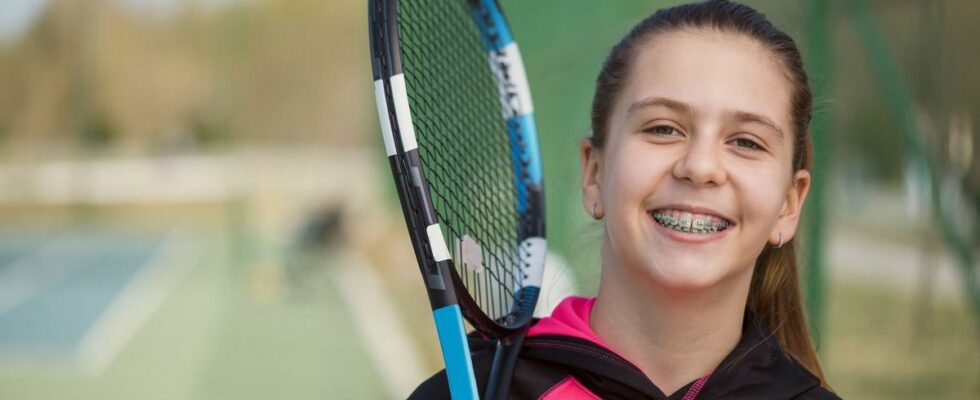Published on
Updated
Reading 3 min.
Do you have braces and want to play sports? No contraindication, but simply some advice, particularly for certain disciplines. Here are the recommendations of the French Federation of Orthodontics to limit the risk of injuries.
Every year, thousands of sports-related accidents cause trauma, 8% of which are related to teeth. However, less than a third (31.5%) of athletes know the right actions to adopt in the face of such injuries. How to protect athletes with hearing aids and what to do in the event of trauma? As the start of the 2024 Olympic and Paralympic Games approaches, the French Federation of Orthodontics shares with you its recommendations concerning good practices to adopt to keep teeth healthy during sport.
The risks of damaging your teeth vary depending on the sport. Among the most traumatic, we find contact sports. Between boxing, wrestling or even rugby… it is imperative to protect your teeth! Furthermore, the rate of dental accidents varies depending on the surface on which you practice. It’s true, falling on a lawn will always be less risky than on ice!
Another interesting point: according to statistics, young children are the most exposed to oral and dental accidents, due to their lack of coordination. Moreover, it is between birth and the age of six that trauma is most severe (around 11 to 30% more serious according to one study).
The right thing to do: protect your teeth!
Whether you are an experienced athlete or an amateur, the French Federation of Orthodontics recommends that you wear a mouthguard, especially if you play a contact sport. In fact, this equipment limits shock and protects your oral health. With the ability to be thermoformable, the mouthguard acts as a protective barrier between your teeth and the soft tissues of your mouth.
Do you wear braces? Doctor and dental surgeon Audrey Chokron warns of the risks: “CEach impact on the face can lead to tooth fracture and damage to the mucous membranes due to the roughness of the braces. However, there are adaptable protective aligners that are perfect for braces wearers by protecting both the teeth and the braces! To use this protection correctly, it is necessary to remold it or change it regularly so that it perfectly matches the shape of your dental arches. Moreover, it is possible to find this type of product in any sports store!
Do you wear aligners or trays? Good news, this type of orthodontic device is more comfortable and more compatible with sports practice. It also has less risk of injury than wearing dental appliances. However, if you want to play a contact sport, you will have to remove them and replace them with a mouth guard.
On the other hand, the dental surgeon and President of the Communication Commission of the French Federation of Orthodontics (FFO), David Couchat explains that dental trauma tends to affect the front teeth (canines and upper incisors). To avoid this and prevent risks, he therefore recommends “early orthodontic treatment” with the aim of “recovering the protective function of the lip and chin” and so “reduce this risk factor and the severity of the trauma”.
What to do in case of shock?
If you wear dental appliances and you suffer a shock, it is imperative to consult your orthodontist, even if there are no visible and alarming signs! Indeed, possible complications could arise later and only a specialist will be able to identify the signs of a potential anomaly and set up monitoring over several months.
The quicker the treatment, the more likely you are to keep your teeth in good condition. Otherwise, impacts on the teeth can have significant after-effects and disrupt the proper development of orthodontic treatment.
To establish a precise diagnosis, the specialist will have to take an x-ray of the teeth and then determine the importance of the shock and its consequences. For this, it looks in particular:
- The possible mobility of one or more teeth;
- The appearance of lesions of the oral mucosa or skin;
- Possible deterioration of the alignment device (rings or gutters);
- The vitality of the teeth;
- Any damage to the crown and root (crack, fracture, etc.);
- Possible bone lesions or sometimes a displacement of the germ of the permanent tooth;
- The way in which the tooth was knocked out during the impact.
